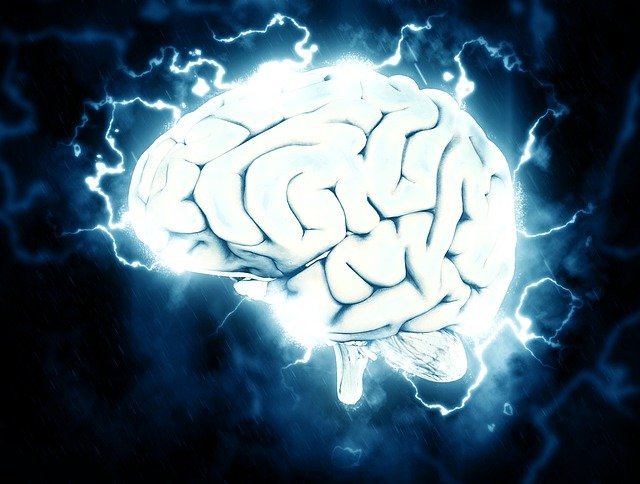
Brain scans of children with autism show differences in the white matter tract that links different brain regions, a new study finds. The research doesn’t prove that these alterations cause autism, however. That’s still unknown.
Instead, the study only shows that altered patterns of brain connectivity in certain areas correlate with autism.
“It is likely that altered brain connections result from the complex genetics of autism,” said Pieter J. Kroes of VU University Medical Center, Amsterdam, who studies the genetic basis of autism but wasn’t involved with this study.
This new imaging study was led by Julie L. Daniels of the University of North Carolina at Chapel Hill.
She used functional magnetic resonance imaging (fMRI) to look for differences in brain connectivity among children with autism compared with typically developing children.
Local connection disruption
For this study, 21 children with autism and 20 typically developing children participated. The kids’ ages ranged from 5 to 18 years old. (All of the children in the study had IQ scores that were average or above.)
Each child was placed in an fMRI scanner where he or she viewed pictures of faces, houses and other objects while their brain activity was monitored.
Individuals with autism have difficulty processing faces and other social stimuli, so the pictures were used to ensure that all of the children had essentially the same experience while their brains were scanned.
The fMRI scans revealed differences in brain connections between children with autism and typically developing kids. The strength of these connections varied widely among individuals with autism.
Overall, brain connections in children with autism were weaker than the connections seen in typically developing individuals.
This voxel-based morphometry (VBM) study was published online on February 16 in JAMA Psychiatry.
Impaired brain circuits
The scans revealed that several regions of the brain had altered white matter track organization among children with autism. For example, the right superior longitudinal fasciculus (SLF), a bundle of fibers that connects two brain regions involved in language processing — Broca’s area and Wernicke’s area — was weaker among children with autism.
This fiber tract is part of a larger neural network called the arcuate fasciculus, which links regions involved in language comprehension.
Typically developing children have the strongest arcuate fasciculus connections between these two brain regions, according to a 2007 study by Kroes and colleagues that used an fMRI technique similar to the one used in this new study.
Linking regions involved in social perception may explain some of autism’s symptoms. For example, kids with autism often have difficulty processing faces and social cues.
They also have atypical brain connections between brain regions involved in social perception, such as the superior temporal sulcus and fusiform gyrus, a 2005 study found.
Differences not due to autism severity
This new study finds that children with autism show differences in white matter track organization compared with typically developing children. However, the researchers aren’t sure how these differences translate into autism symptoms.
“We don’t know if it is a cause or consequence of autism,” Daniels said. “For example, altered brain connectivity may result from repeated interactions with others that alter brain function.”
It’s also possible that this disrupted brain organization is present early in life before autism symptoms develop.
“Future studies can use neuroimaging methods to investigate this question,” Kroes said.
“By studying how infants and toddlers differ from or resemble those who later receive a diagnosis or go on to develop typical development, we may learn about the early neurobiological features of autism.”
One limitation of this study is that all of the children had IQ scores above 70. Researchers don’t know if white matter abnormalities exist among children with average IQs or lower IQs, according to Daniels and Kroes.
Spotty connections
The bottom line seems to be that there are differences between the brains of typically developing individuals and those who have autism. “We need to understand why these differences exist,” Daniels said.
“In the meantime, we should avoid drawing conclusions about anyone child by looking at a scan of his or her brain.”
Findings may help identify autism in infants
Previous studies have documented structural and functional underconnectivity in the brains of people with autism, which refers to developmental disabilities that can include problems with communication and social interaction.
The new study shows that the brains of children with autism have underconnectivity in analyses of white matter, or myelin tracts, across an array of different regions.
In particular, the researchers found decreased connectivity between the cerebral cortex and subcortical structures involved in cognition and reward processing.
In addition to showing that disrupted brain connection patterns correlate with autism, this study also may help identify autism in infants, the researchers said.
“Identifying early functional connectivity impairments could lead to earlier diagnosis and intervention,” Daniels told LiveScience. “Previous studies have shown that there is a critical period for developing these connections between ages 6 months and 2 years, which is when intervention would be most effective.”
More studies needed
The study only describes the brain-networking alterations in children with autism, not what causes them or how they might be related to symptoms of autism.
These questions need further investigation, experts say.
“Further research will need to look at other aspects of connectivity, such as the strength of connections between different brain areas, and how information flows through various neural networks,” Kroes told LiveScience.
In addition, it’s unknown how these brain-connection patterns will affect the development of children with autism. “It is not yet known whether these changes are a cause or an effect of autism,” Daniels said.
Summary
“Brain connectivity in children with autism appears to be different from typically developing children,” said lead researcher Dr. Eric Schmitt, a neuroscientist at the University of California San Diego.
However, it’s unknown if these differences are caused by autism or if they contribute to its effects.
In the future, this technique may help to diagnose autism in very young children, Schmitt said.
According to Dr. Eric Hollander of Montefiore Medical Center in New York City, “These techniques may be useful as a way of diagnosing autism earlier and with higher reliability than is currently possible.”



